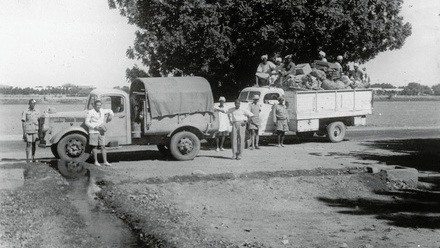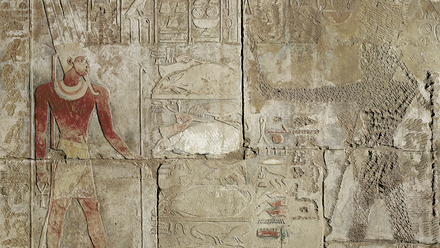Amelia B Edwards: Her life and legacy
By Carl Graves
Amelia Ann Blanford Edwards was born in 1831 to Thomas and Alicia Edwards in Clerkenwell, London. The family later moved to 19 Wharton Street. A blue plaque was unveiled on this house in 2015 by English Heritage and the EES to honour Edwards’ connection. She was home-schooled by her mother, excelling in art, music, languages, and writing, but she also enjoyed reading and later confessed that she was rarely without a book in her hands. She recalled how, as a child, John Gardner Wilkinson’s Manners and Customs of the Ancient Egyptians fascinated her as did the tales from A Thousand and One Arabian Nights.
Matilda Betham-Edwards, Edwards’ cousin, reported that she was only nine years old when she published her first piece of writing. A competition in a local journal offered a prize to the best temperance story which Edwards entered and won.
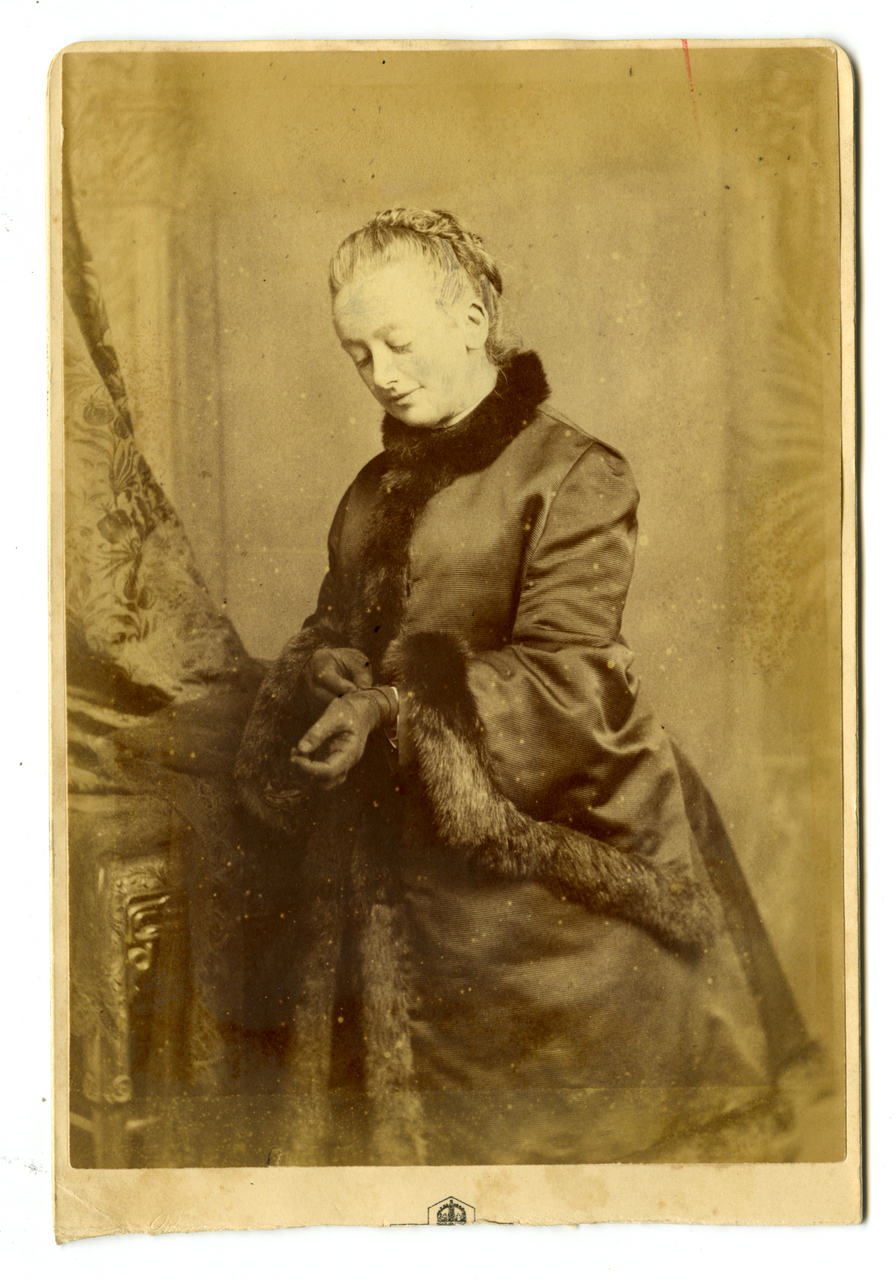
A photograph sent by Amelia Edwards to her assistant secretary Emily Paterson for Christmas 1888. Courtesy of the Egypt Exploration Society.
Though Edwards excelled at writing and art, she had decided, at 14, to focus on a single career path. In a letter to her friend Edward Abbott, she wrote, ‘In an evil hour, I chose music – for I was considered too delicate to paint in oils & become, what I most wished to be, an artist.’ She trained on the piano, then organ, and excelled in guitar. She also sang. However, after several years working hard to perfect her skills she stated that ‘the divine gift of music’ was not hers.
Edwards ultimately ceased her ambitions for a music career after publishing the tale ‘Annette’ in 1853. By 1859, she had achieved financial independence as a novelist, and found a way to support her aging parents.
However, disaster struck Edwards in 1860. Within a week of one another, both her parents died. That same year, she moved in with Mrs Ellen Drew Braysher whose husband and only child died shortly after. Together, they moved from London to Westbury-on-Trym near Bristol into a large, detached, home called The Larches in 1863.
During this time Edwards had relationships with other women, notably Ellen Rice Byrne. Sadly, none of these lasted and, in 1871, Ellen Byrne and her husband, John, moved to London, leaving Edwards alone and suffering from depression. Her melancholy led her to travel in Europe where she met Anne Hampton Brewster and Lucy Renshaw in Rome. Both women would ignite further passion in Edwards, but Renshaw would become Edwards’ travelling companion, first to the Dolomites in Italy during 1872, and then onto Egypt in 1873.
Edwards wrote about their first adventure in her travel book, Untrodden Peaks and Unfrequented Valleys: a midsummer ramble in the Dolomites, which included her illustrations. This book combined her love of writing, art, and travel. As a travel writer, Edwards made her third successful career transformation.
In 1873, following wet weather in France, Edwards and Renshaw decided to travel across to Egypt via Italy where they would hire a dahabiyeh and sail up the Nile. At the age of 41, Edwards discovered her final career as an Egyptologist.
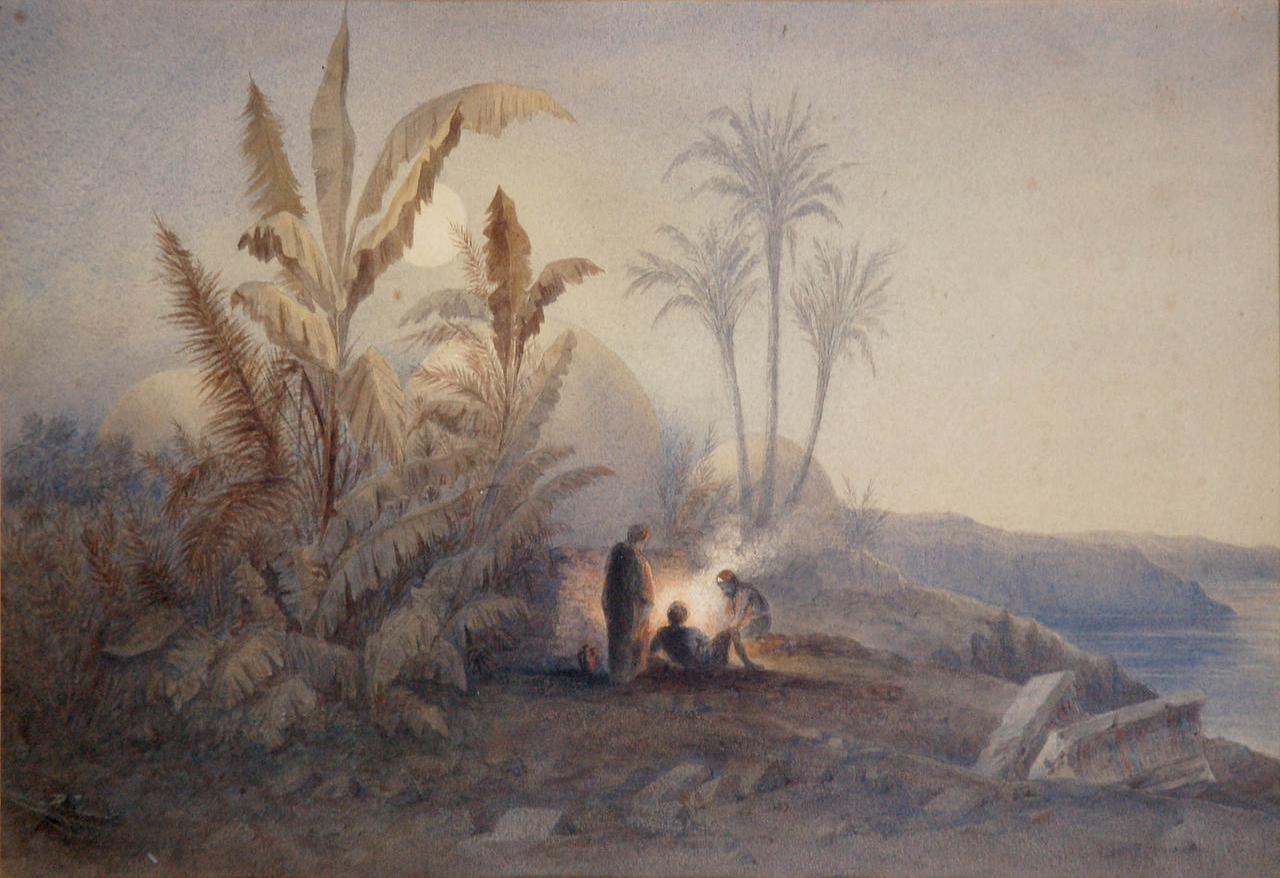
‘Arab tombs near Siout (Eastern bank of the Nile) Middle Egypt’, Amelia B Edwards, 1877. ART.212, courtesy of the Egypt Exploration Society.
Edwards and Renshaw arrived in Egypt in November 1873 where they proceeded to travel A Thousand Miles Up the Nile – the title of Edward’s travelogue published in 1876. The book narrates how they visited archaeological sites across Egypt and Nubia and the people that they encountered. Today the book would raise questions about how Edwards perceived local Egyptians and her attitude towards antiquities laws at the time.
The book became an instant bestseller and went through several editions and reprints, notably one in 2022 including an introduction contextualising the work for modern audiences.
On her return to England, Edwards founded the Egypt Exploration Fund (now Society) in 1882 to stop the damage and destruction she witnessed at Egyptian monuments caused by looters, tourists, and irresponsible archaeologists. She served as co-Honorary Secretary of the Fund until her death in 1892 when she was buried in St Mary’s church, Henbury beneath a stone obelisk and ankh.
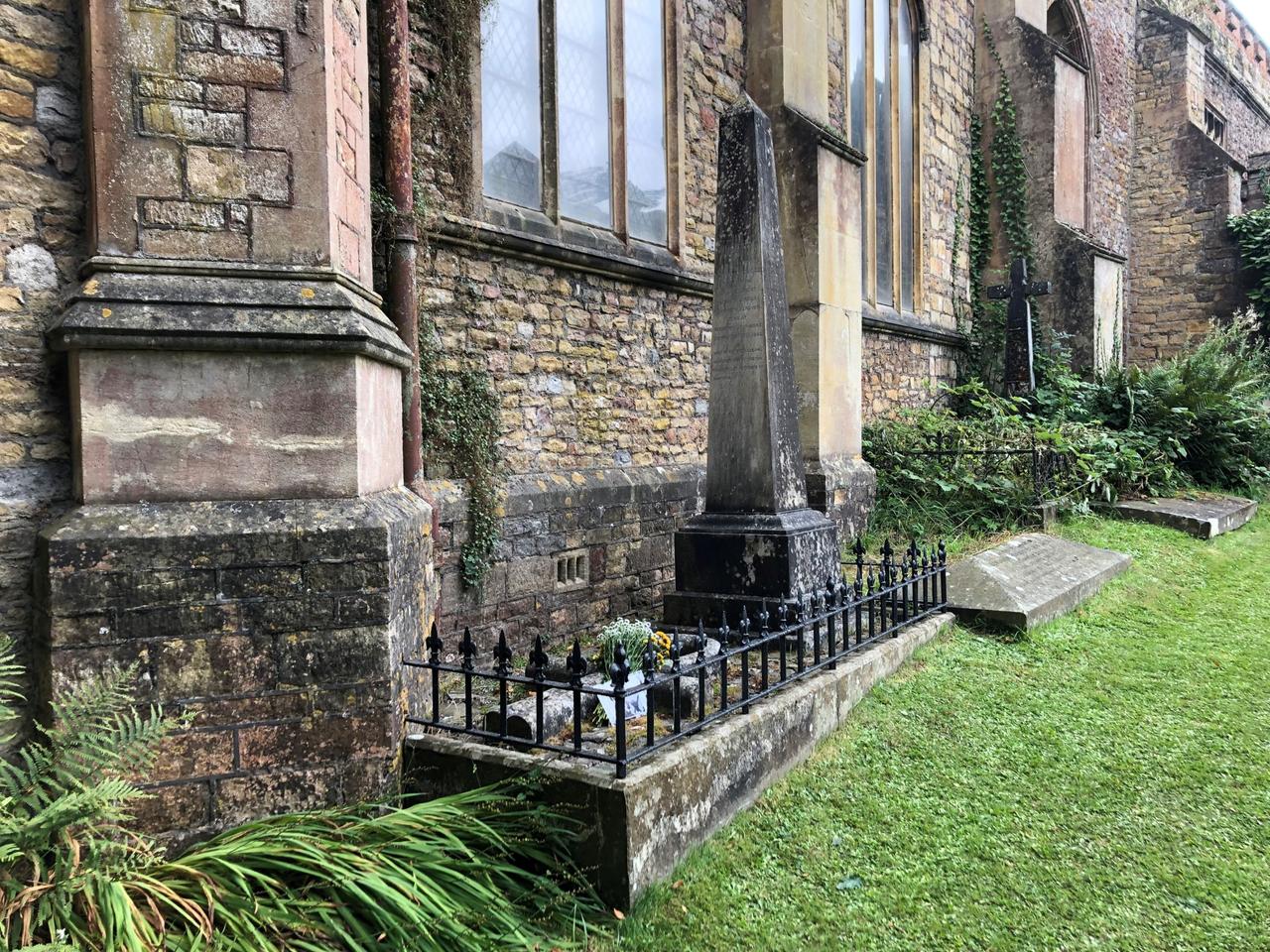
The resting place of Amelia B Edwards, and Sarah and Ellen Braysher at St Mary’s church in Henbury, Bristol.
Edwards is regarded as one of the founders of British Egyptology and, on her death in 1892, also founded the first professorship of Egyptology at University College London where she also gifted her collection of Egyptian artefacts. That professorship was given, on her terms, to William Matthew Flinders Petrie. This collection today resides in the Petrie Museum of Egyptian and Sudanese Archaeology. Edwards’ sympathies for the women’s rights movement inspired her choice of UCL which, at the time, was the only university to offer women degrees on equal terms as men. The important role that women have since played in the development of British Egyptology is no doubt also connected to Edward’s pioneering role in founding the field.
Further reading
Edwards, A. 2022 (reprint). A Thousand Miles Up the Nile, with an introduction by Carl Graves and Anna Garnett. London: The Egypt Exploration Society.
Jones, M. 2022. The Adventurous Life of Amelia B. Edwards, Egyptologist, Novelist, Activist. London: Bloomsbury.
Moon, B. 2006. More Usefully Employed: Amelia B. Edwards, writer, travellers and campaigner for ancient Egypt. London: The Egypt Exploration Society.
Rees, J. 1998. Amelia Edwards: Traveller, Novelist & Egyptologist. London: The Rubicon Press.

